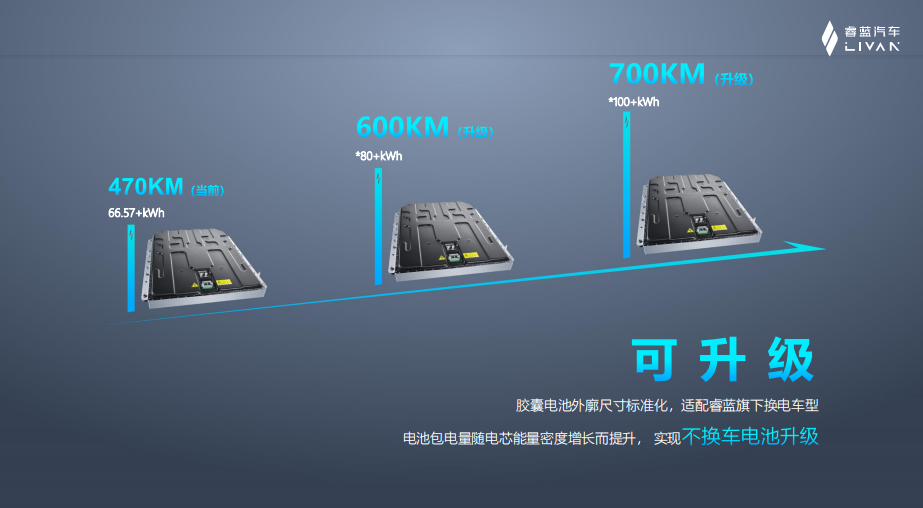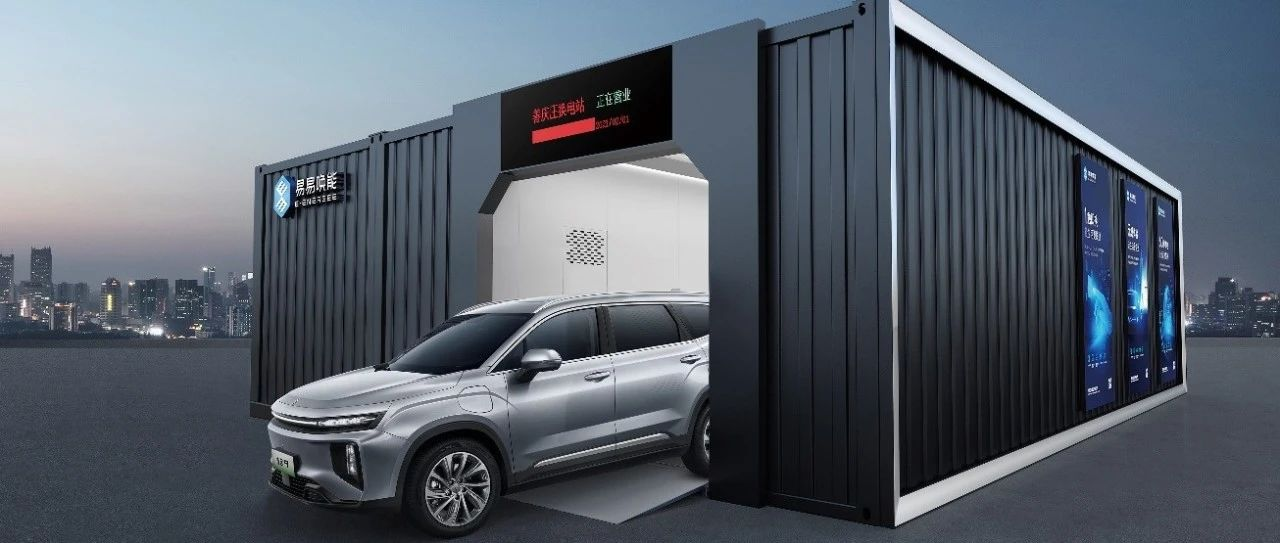Author: Feng Jingang
The other day, while charging my electric car (fast-charging) in the community, it showed that it would take more than two hours to fully charge, which was the longest charging time I have experienced so far. Then, I posted a dynamic message in my friend circle: “In winter, electricity consumption is high, and charging is slow, resulting in a sharp drop in user experience.” Even in the Yangtze River Delta where I am located, the experience of charging electric vehicles is like this, let alone in the north, and even in the northeast, the experience is unimaginable.
You must admit that you should not try electric vehicles easily unless the charging problem is solved. However, if your car supports battery swapping and the battery swapping network is well-developed, then you may as well give it a try.
On December 17th, Ruiyan Motors, derived from Geely and Lifan, released a brand new battery-swapping electric vehicle model – Ruiyan 9. Its arrival is to solve the industry pain points and meet market demand.
As for Ruiyan Motors, its brand mission is to popularize battery swapping for light travel, which can be simply understood as “NIO for the low-end market”. In the electrification and transformation brand framework of the Great Geely, Ruiyan Motors plays a crucial role and is even more important than Geometry Motors to a certain extent, because battery swapping logic is ultimately superior to charging, and there is still a practical constraint: the current cost of power battery is still high, which means that battery swapping without the burden of battery packs will gain greater promotion weight.
The helm of this submarine Ruiyan Motors is none other than Lou Yuanfa, one of the key creators of Geely Atlas, Geely’s best-selling vehicle with 3 million units sold, and other popular models. The expectations of Li Shufu, the chairman of Geely, for Ruiyan Motors and his high regard for Lou Yuanfa are evident.

Compared with previous product launches, the Ruiyan 9 release conference is more “lively”. Unlike other products under the Ruiyan brand, the Ruiyan 9 is more committed to breaking into the private user market in the C-end. Since NIO has already tested the battery swapping logic in the C-end market, the market opportunities for the Ruiyan 9 are not lacking.
Even so, if you want to leverage users and win the market, you still need a lot of efforts, from product development to a series of marketing initiatives and even the layout of the battery swapping network, and so on.
As for product development, the pros and cons of Ruiyan 9 are quite prominent.Regarding the price, the subsidized price of the Roewe Ei5 ranges from RMB 109,900 to RMB 129,900. As a mid-size (6/7-seater) intelligent electric SUV, this price is very competitive.

In terms of battery pack options, there are three choices for the Roewe Ei5:
- Battery subscription service: monthly rent of RMB 898 for a 66.57 kWh battery pack.
- Battery financing service: flexible installment payments available for the battery, with monthly payments as low as RMB 898.
- Battery outright purchase option: RMB 70,000 for the 66.57 kWh battery pack and RMB 60,000 for the 52.56 kWh battery pack.
Although an outright purchase option is available, the battery subscription service is the top choice since Roewe is a battery swapping brand.
As for the intelligent configuration, the Roewe Ei5 is equipped with a 12.3-inch LCD instrument panel, a 12.3-inch floating central control screen, and an 8-inch W-HUD head-up display. The top-of-the-line configuration (RMB 129,900) comes with an L2 auxiliary driving system, and the cost performance is relatively good.
Regarding range, due to the battery swapping model, Roewe Ei5 adopts the strategy of using brand standard battery packs, which are available in two options: 52.56 kWh and 66.57 kWh. The advantage is that battery swapping is supported, but the disadvantage is that the range is limited. This is especially true for large vehicles like the Roewe Ei5, which has a minimum range of only 380 kilometers and a maximum range of only 470 kilometers under CLTC test conditions.
According to Roewe’s battery pack upgrade plan, the current battery packs can be upgraded to 80 kWh and 100 kWh in the future.

Therefore, the Roewe Ei5 is currently more of a localized product in terms of specific use cases and regions.
During the press conference, Lou Yanfeng said: “Roewe will provide users with efficient and convenient battery swapping services and more practical configurations based on specific use cases, and let some people switch to electric vehicles first, then give the choice back to the users.”
To expand the scene range of RuiBlue 9, the battery swapping network will become crucial. Depending solely on charging network would make RuiBlue 9 no different from other electric vehicles on the market, facing weakness in endurance. Of course, the size advantage of the vehicle is also quite evident. However, with the unique battery-swapping network of RuiBlue, the competitiveness of RuiBlue 9 will be outstanding, and the direct competition with gasoline cars will not be a problem.
Unlike NIO, which promotes its own battery-swapping station, the RuiBlue’s battery-swapping network is being promoted by DaGuan Auto via the YiyiHuanDian platform. The synergy of both companies’ actions is of great importance to the success of the project.
During the product launch, RuiBlue did not disclose the current layout of YiyiHuanDian. As per previous reports, the YiyiHuanDian aims to complete the construction of 300 battery-swapping stations this year, but the actual implementation is unclear. According to a long-term plan, YiyiHuanDian will complete the construction of 5,000 battery-swapping stations by 2025.
To verify RuiBlue 9’s battery regeneration, I downloaded and registered the RuiBlue App. The App shows that there are only two charging stations and no battery-swapping stations nearby. If I were to buy a RuiBlue 9, it would mean that it would be more of a “charging vehicle” at the moment rather than a “battery-swapping car.”
On June 21st, at the RuiBlue Auto brand conference, Lou Yuanfa said, “Battery-swapping is the trend and the future. Battery-swapping replaces not only the battery but also a way of life that allows people to have freedom of mobility, from time freedom to physical freedom. RuiBlue cars will help consumers get rid of range anxiety, and return to people the right to choose a free lifestyle.”
In November, RuiBlue Auto sold 7,355 vehicles, an increase of 26% compared to the previous month, setting a new historical high.
The battery-swapping market has vast potential, and young RuiBlue Auto still needs more exploration and effort, and RuiBlue 9 requires more C-end users to discover and develop.
This article is a translation by ChatGPT of a Chinese report from 42HOW. If you have any questions about it, please email bd@42how.com.
